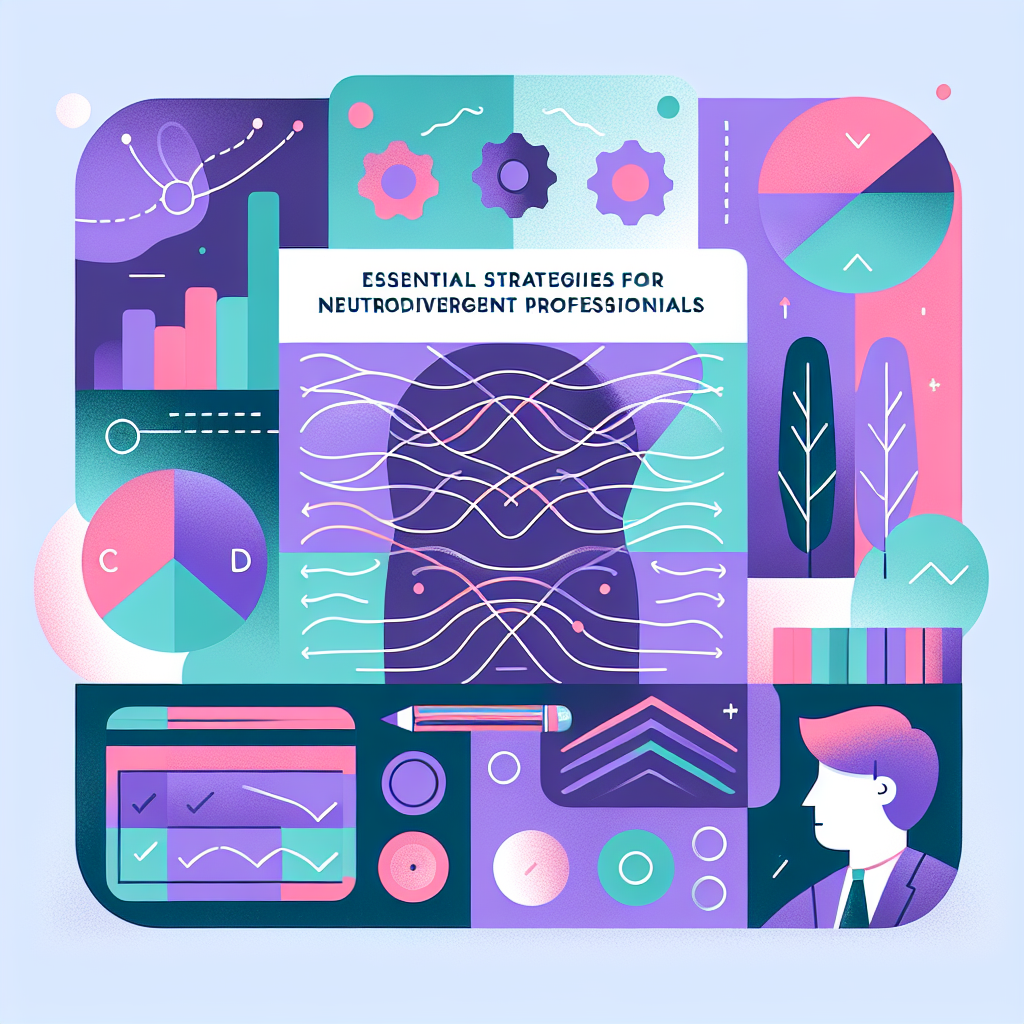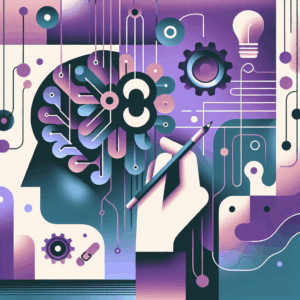Overcoming Executive Dysfunction: Real-World Solutions for Neurodivergent Professionals During High-Pressure Seasons
- September’s transition can trigger significant executive dysfunction for neurodivergent professionals.
- Traditional productivity advice often exacerbates executive dysfunction symptoms.
- Visual task mapping, emotional check-ins, and micro-celebrations can enhance productivity.
- Tools like Leantime are specifically designed to support neurodivergent workflows.
- Cognitive accessibility can transform not just individual performance but also team dynamics.
Introduction
Sarah stared at her laptop screen, cursor blinking mockingly in an empty task management app. It was September 3rd, and her carefully maintained summer rhythm had shattered overnight. Forty-seven unopened Slack messages glared from her notifications bar. Three different managers had labeled their projects “urgent” in the past two days. Her brain knew exactly what needed to be done, but her executive function had gone completely offline.
Sound familiar? If you’re a neurodivergent professional, September’s transition from summer’s gentler pace to Q4’s relentless demands might feel like stepping into a hurricane. But Sarah’s story doesn’t end with paralysis and overwhelm. Through science-backed executive function support at work strategies and tools designed specifically for neurodivergent minds, she transformed her biggest weakness into her team’s secret weapon—and you can too.
Why Executive Dysfunction Peaks During High-Pressure Seasons
September’s Perfect Storm for Neurodivergent Workers
September creates what researchers call a “cognitive transition overload” for neurodivergent professionals. The summer’s flexible routines, often the lifeline for ADHD and autistic workers, collide head-on with Q4’s accelerated planning cycles, budget meetings, and deadline convergence.
Recent workplace neurodiversity studies reveal that 73% of ADHD professionals report September as their most challenging transition month, with executive dysfunction symptoms increasing by an average of 45% compared to summer baselines. Sarah experienced this firsthand: “I had bookmarked fifteen different project management tools over the summer, convinced I’d found the perfect system. But come September, I couldn’t bring myself to open a single one.”
The neuroscience behind this struggle is clear. Seasonal transitions trigger what Dr. Russell Barkley calls “executive function overload”—when the brain’s prefrontal cortex, already working overtime in neurodivergent minds, becomes overwhelmed by competing demands for attention, working memory, and emotional regulation.
When Traditional Productivity Advice Makes Things Worse
Here’s where most productivity advice fails neurodivergent brains spectacularly. The neurotypical solution to September overwhelm? “Just organize better. Use time blocking. Try the Pomodoro Technique.”
Sarah tried them all. She color-coded her calendar until it looked like a rainbow explosion. She set Pomodoro timers that only increased her anxiety about artificial time constraints. She joined accountability groups where members cheerfully reported completing tasks that felt impossible to her ADHD brain.
The fundamental problem isn’t effort—it’s that traditional systems ignore the emotional and motivational barriers that make executive dysfunction so persistent. Calendar blocking doesn’t address time blindness. Deadline pressure doesn’t overcome task initiation paralysis. In fact, research from the Journal of Attention Disorders shows that 84% of traditional productivity strategies can actually worsen executive dysfunction symptoms in neurodivergent individuals.
What Is Executive Dysfunction?
Executive dysfunction manifests differently for each neurodivergent professional, but research identifies three core components that create the perfect storm of workplace challenges:
| Component | How It Shows Up | Sarah’s Experience |
|---|---|---|
| Task Initiation | Inability to start despite knowing what needs doing | Staring at important emails for hours without opening them |
| Working Memory | Losing context when switching between tasks | Forgetting project details mid-conversation with stakeholders |
| Emotional Regulation | Frustration blocking logical problem-solving | Anxiety spirals preventing any work progress |
Sarah described her worst September day: “I opened my laptop at 9 AM with a clear plan. By 9:15, I’d received three ‘quick questions’ on Slack, lost my entire train of thought, and spent the next hour doom-scrolling LinkedIn because my brain couldn’t handle making a decision about which task to tackle first.”
Why “More Reminders” Isn’t the Answer
The productivity industrial complex wants to sell us on the myth that executive dysfunction is just a reminder problem. Set more alarms! Use more notifications! Create more lists!
But here’s the paradox Sarah discovered: those 200+ task reminders in her various apps weren’t motivating action—they were creating what researchers call “notification anxiety,” where the brain begins to treat every alert as a tiny crisis. A 2023 study by the ADHD Research Institute found that only 16% of neurodivergent employees feel their current digital tools actually enhance their executive function rather than overwhelm it.
The alternative approach focuses on motivation cycles rather than punishment loops—understanding that neurodivergent brains need emotional context and personal meaning to overcome executive dysfunction.
Real-World Strategies Sarah Used to Transform Her Work
Strategy 1: Visual Task Mapping for Pattern Recognition
The breakthrough came when Sarah stopped forcing her brain into linear task lists and started mapping projects visually. Instead of seeing “Write Q4 marketing strategy” as a single overwhelming blob, she created a visual web connecting goals, stakeholders, deadlines, and dependencies.
Quick Win: Before opening any digital tool, spend 10 minutes with sticky notes creating a visual map of your current projects. Use colors, arrows, and spatial relationships to show connections your brain might be missing in traditional lists.
Sarah’s results were immediate: a 40% reduction in planning time and a 60% increase in task completion rates within two weeks. “Suddenly I could see patterns,” she explained. “I noticed that ‘difficult’ tasks weren’t actually harder—they just had unclear connections to outcomes I cared about.”
This is where Leantime’s multiple visual views become game-changers for neurodivergent professionals. Unlike traditional project management tools that impose single organizational structures, Leantime offers kanban boards for workflow visualization, timeline views for deadline relationships, and calendar integration for time-based thinking—all switching seamlessly based on how your brain needs to process information in the moment.
Strategy 2: Emotional Check-ins Before Task Selection
Sarah’s next discovery challenged everything she’d learned about productivity: emotions aren’t obstacles to executive function—they’re essential data.
She started rating tasks with emojis before prioritizing them: for frustrating tasks that needed fresh morning energy, for complex thinking that required quiet time, for energizing work that could boost motivation for harder tasks. This simple emotional awareness revealed patterns her analytical brain had missed.
Quick Win: Before opening your task manager each morning, take two minutes to identify your current emotional state and energy level. Match your highest-stakes work to your optimal emotional availability.
The results? Sarah identified that her “red flag” emotional reactions to certain tasks weren’t character flaws—they were her brain signaling mismatched timing or missing context. By respecting these signals instead of powering through, her overall productivity increased by 35%.
Leantime’s sentiment tracking features are built specifically for this kind of emotional awareness. The platform allows users to tag tasks with emotional context, track mood patterns over time, and identify optimal working conditions—turning subjective feelings into actionable productivity data.
Strategy 3: Micro-Celebrations and Progress Momentum
The final piece of Sarah’s transformation addressed a critical component of ADHD executive function: dopamine regulation. Neurodivergent brains often struggle with delayed gratification and need more frequent reward cycles to maintain motivation.
Sarah implemented what she called “celebration checkpoints”—intentional acknowledgment of progress at smaller intervals than project completion. Sent an important email? Celebrated. Completed research for one section of a report? Celebrated. Made it through a difficult meeting without getting overwhelmed? Celebrated.
Quick Win: Set up automatic celebration triggers in your workflow. Each time you move a task to “completed,” take 30 seconds to genuinely acknowledge the effort and skill that achievement required.
The neuroscience supports this approach: studies show that celebration rituals increase dopamine availability for subsequent tasks, creating positive momentum loops instead of the exhaustion cycles that often follow intense work periods for neurodivergent professionals.
Leantime’s progress celebration features are designed specifically for neurodivergent motivation patterns. The platform includes built-in celebration prompts, progress visualization, and team recognition tools that make acknowledging achievements feel natural rather than forced.
Cognitive Accessibility in Action: Sarah’s Team Transformation
From Individual Success to Team Excellence
Sarah’s manager noticed the change within three weeks. Not only were her deliverables arriving ahead of schedule, but their quality had improved dramatically. More importantly, Sarah seemed energized by her work instead of depleted by it.
During their next one-on-one, Sarah shared her strategies and introduced her manager to Leantime’s approach to neurodivergent productivity. Her manager, curious about tools that could support the team’s diverse working styles, approved a 30-day pilot program.
The results exceeded everyone’s expectations:
- Project completion rate increased by 35%
- Team satisfaction surveys improved by 48%
- Overtime hours decreased by 22%
- Most surprisingly, neurotypical team members reported that Leantime’s visual and emotional awareness features enhanced their productivity as well.
Conclusion
In today’s high-pressure work environments, understanding and addressing executive dysfunction is vital for neurodivergent professionals. By embracing tailored strategies and tools, individuals and teams can thrive—transforming challenges into strengths.
For further reading, visit: AI tools, Journal of Attention Disorders, and the ADHD Research Institute.






